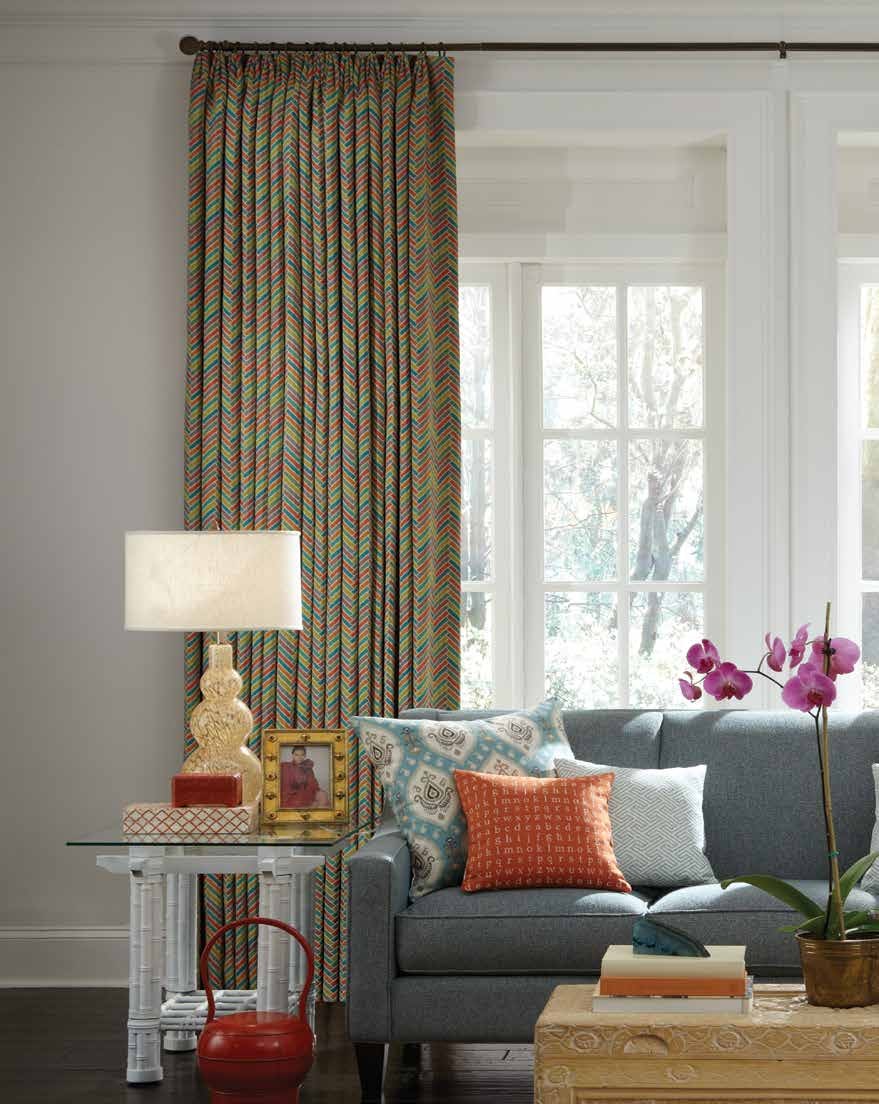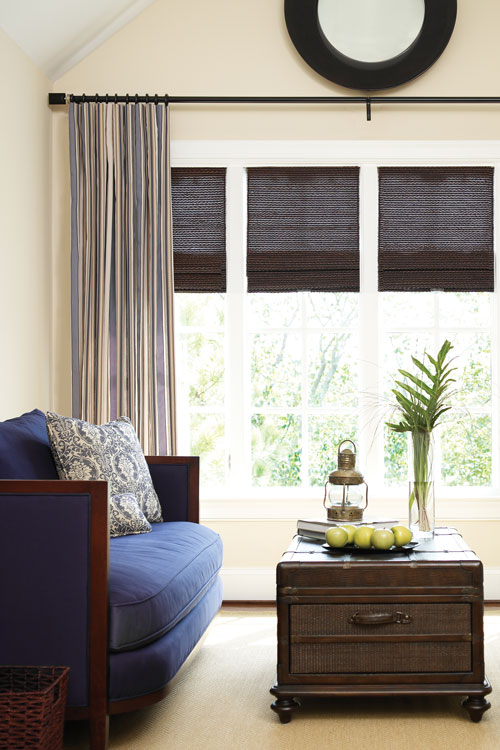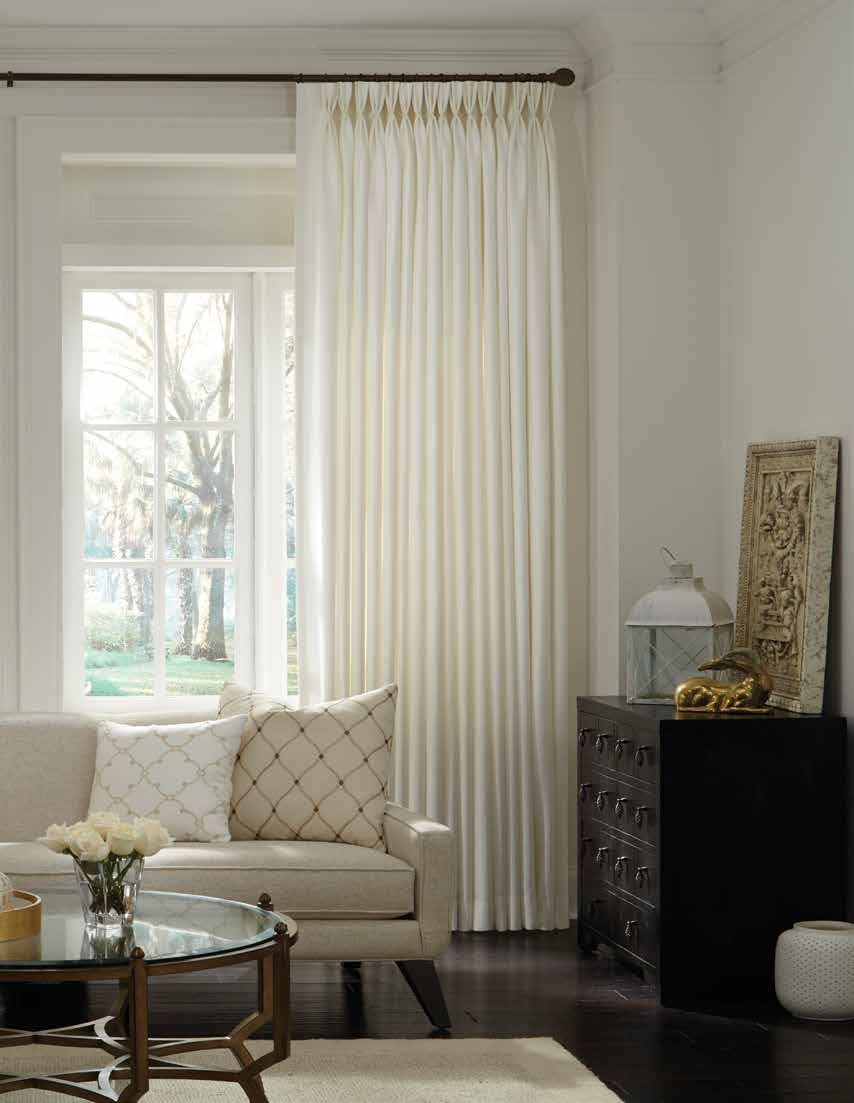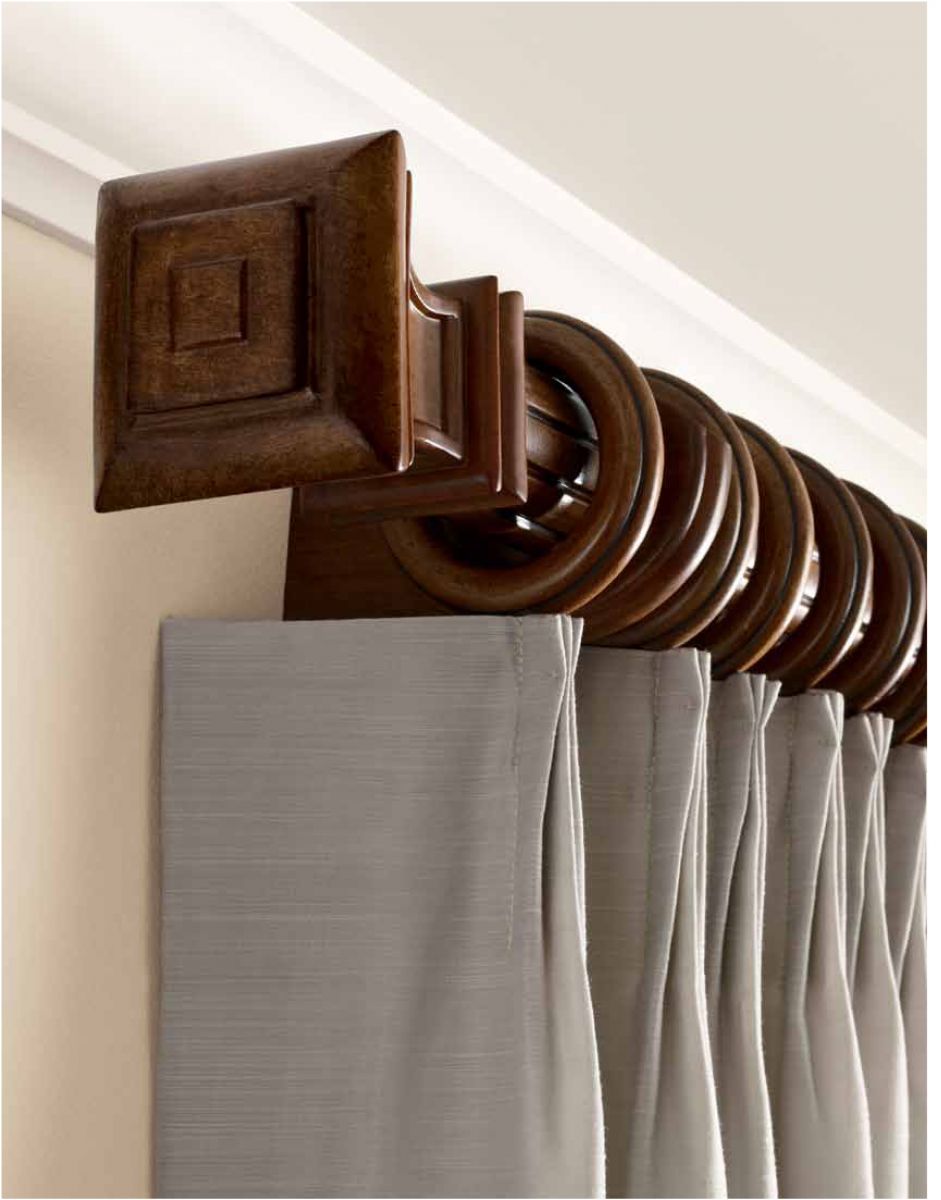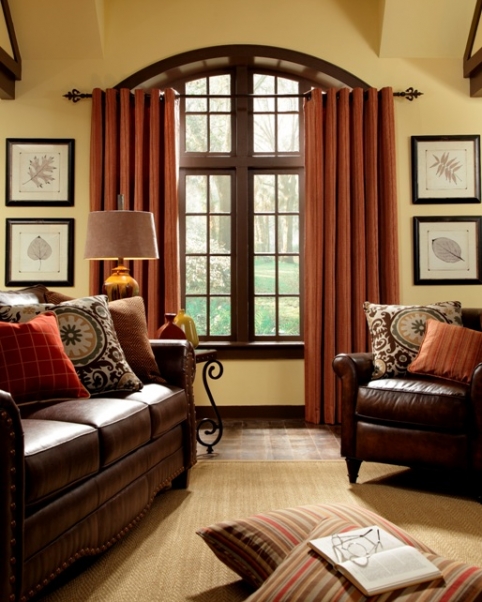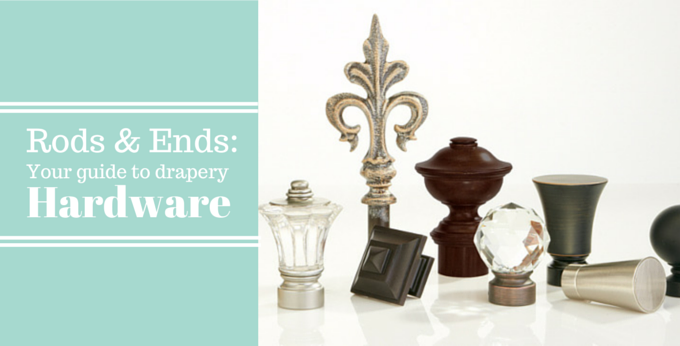
When selecting custom drapery, it’s easy to get caught up in the fabric selection. With so many gorgeous prints, patterns and colors to choose from, rods and finials can be a bit of an afterthought. However, drapery hardware plays a very important visual and functional role, and your selection should be just as thoughtful as when choosing fabrics.
Custom drapery has experienced somewhat of a resurgence in the past few years, thanks to the introduction of more contemporary panels and finishing options. Could your windows use some softening, or better yet, a boost of color? Then consider adding custom drapery to your space. But before you do, make sure to read our guide to drapery hardware.
Custom Drapery – Carole Fabrics
Stationary vs. Traversing Panels
Drapery panels function in two ways. Stationary panels are purely decorative and stay permanently open on each side of the window. Traversing panels are designed to be opened and closed, and travel (aka traverse) across the rod accordingly.
Custom Drapery – Carole Fabrics
Hardware tips: If you select traversing panels, it’s important to choose a drapery rod that is sturdy enough to handle the panels being tugged and pulled across. It’s also advised to choose finishes that won’t deteriorate as the panel’s hardware rubs the rod during regular opening and closing.
Fabric Weight
The volume and weight of fabric can vary considerably depending on the textile, size of the window and whether the panels are stationary or traverse.
Custom Drapery – Carole Fabrics
Hardware tips: If your drapery panels are heavy, then it’s important to choose a rod that can hold its substantial weight. It’s also critical that rod hardware is anchored securely into the wall, to avoid your drapery rod buckling under the weight of the fabric.
Finials
Finials are the decorative ends of the drapery rod and depending on your design aesthetic, are a great way to add visual interest to your rod.
Hardware tips: Historically made from the same material as the rod, most homeowners now select finials made from resin. Resin fixtures are less expensive, last longer, can mimic the look of real metal and wood finishes, and can be cast in more detailed shapes and designs.
Attaching the Fabric
There are many ways to attach fabric panels to a drapery rod, from grommets (reinforced metal eyelets), rings, loops and clips, to passing the rod directly through a rod pocket.
Grommet Top Custom Drapery
Hardware tips: Functionality plays the primary role in determining the way your fabric is attached to your drapery rod. For instance, traversing panels require hardware that can easily and smoothly move across the rod, like rings or grommets.
Your decorating style also plays a key role in the way your panels are attached to the rod. For example, grommet top drapery coordinates well with contemporary décor and rings are ideal for attaching traditional pleated panels.
Ready to start your custom drapery project? Then sign-up now for a free in-home design consultation and let us worry about all the drapery hardware details!
And for more drapery tips, make sure to check out our 2015 Drapery Trends post.
Cover Image Credit: Carole Fabrics



